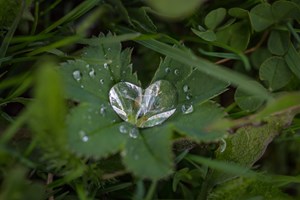World water day - how to reduce your water footprint
22 March 2023
World Water Day is upon us. Since 1993, World Water Day has been celebrated on the 22nd of March. This day of celebration causes us to think about the importance of fresh water, whilst raising awareness of the fact that 2.2 billion people are living without safe water access*.
The UN’s sixth Sustainable Development Goal is to ensure safe access to water and sanitation for all. A basic human need for survival, billions of people are still not able to access clean, fresh water.

With factors such as poor water management, overpopulation and increasing water needs for large industries, reaching universal access to water has been unsuccessful so far.
For example, 26%** of the global population still don’t have access to clean water, with eight out of ten people who lack this access living in rural areas**.
So, not only does World Water Day raise awareness, but it also gives us all an opportunity to reflect on how we can reduce our water footprint.
Your water footprint
You water footprint refers to the amount of water you use, a little like your carbon footprint.
Having a large water footprint can cause issues such as high energy use, stressed water management systems and water pollution due to high demand.
In order to promote safe and responsible water use, there are multiple things that we can all do to reduce our water footprint.
How to reduce your water footprint
Recycle. Recycle.
Recycling will reduce your water footprint as you’ll be reusing rather than buying from companies that use a lot of water.
For example, the fashion industry is the second largest consumer of water and creates 2-8%*** of global carbon emissions. To give a little perspective, it takes a whopping 2,720 litres of water to make one cotton T-shirt****.
So, just like we do here at Swale Heating with our uniforms, recycling and reusing clothes will reduce your water footprint.
Fill up the washing machine and dishwasher
By filling up the washing machine and dishwasher before switching them on, you’ll be using less water. What’s more, you’ll be using less energy, saving you money off your bills.
A simple yet effective habit, this will reduce your water footprint. And it’s something that we do at Swale Heating HQ.
Treat yourself to a boiling water tap
Having a tap that offers instant boiling water will not only reduce your wait time for your cuppa, it’ll also reduce your water and energy use.
With a boiling water tap, you’ll use the exact amount of water, saving energy as you won’t be wasting any energy heating up unwanted water. What’s more, you won’t be wasting any water thanks to precisely pouring the exact amount you need.
We’re very lucky to have a boiler water tap at Swale Heating Head Office. Not only do we not have to wait until the kettle is boiled, but our water footprint is reduced from having such a handy appliance.

Opt for tap water
Like that of recycling, choosing tap water over bottled water will help to both reduce your water footprint and use of plastic.
Surprisingly, it takes 5.3 litres of water to produce just one plastic bottle. By replacing plastic bottles with just one reusable bottle, your water footprint will dramatically decrease.
Here at Swale Heating, every staff member has a reusable bottle, making it another simple and effective habit to help reduce our water footprint.
Fix your leaking radiators and pipes
Check your radiators, boiler and any other pipework to ensure that nothing is leaking. With leaks come water waste, so, not only will fixing any leaks benefit your central heating system’s efficiency, but it’ll reduce your water footprint.
All our engineers are experts in boiler repair, so we can certainly help if you’re in need of a Gas Safe registered engineer to undergo any repairs.

Here, we have given 5 simple steps in helping you to reduce your water footprint.
Not only can we help you with your central heating system, but you can rest assured that, by choosing Swale Heating, you’ll be choosing a company that is sustainable and environmentally responsible.
Information sources:
****Vogue
*****Foodprint